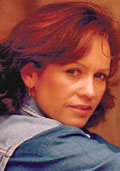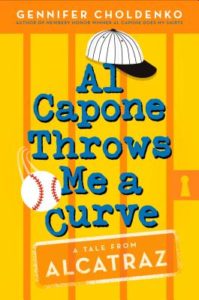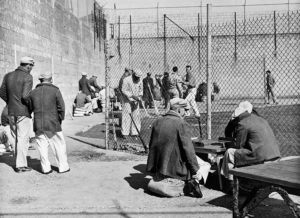interview by Kristi Wright
 Gennifer Choldenko is the Newbery Honor, ALA notable, NYT Best-selling author of Tales from Alcatraz along with numerous other novels and picture books. Recently, she visited our middle grade book club, and we were beyond delighted to ask her all about her very successful Alcatraz series, especially her fourth in the series, AL CAPONE THROWS ME A CURVE, as well as her writing process. It was such a lovely time. Gennifer couldn’t have been more gracious and supportive.
Gennifer Choldenko is the Newbery Honor, ALA notable, NYT Best-selling author of Tales from Alcatraz along with numerous other novels and picture books. Recently, she visited our middle grade book club, and we were beyond delighted to ask her all about her very successful Alcatraz series, especially her fourth in the series, AL CAPONE THROWS ME A CURVE, as well as her writing process. It was such a lovely time. Gennifer couldn’t have been more gracious and supportive.
Here is an excerpt from that interview:
KidLit Craft: Al Capone Throws Me a Curve is the fourth book in a successful series. Did you intend to write a four book series when you began writing Al Capone Does My Shirts?
Gennifer Choldenko: No, I really didn’t. And certainly writing four Tales from Alcatraz novels over the course of 13 years wasn’t the best marketing plan. But it was the best way to make sure each novel was the absolute best story I could write. For me, it was important to write other novels between the Alcatraz installments. That way I came to each book eager to spend two or three years on Alcatraz again.
KidLit Craft: What makes these characters ones you’ve wanted to return to over the years?
GC: That’s a good question. I guess I would say they are complex characters with rich inner lives. There were more sides to Moose and Natalie that I wanted to explore – more complexity than I could handle in one book. Moose is a little like my brother. And Natalie is a bit like the sister I never quite understood.
 KidLit Craft: When you began to write the first book in the series, did you decide to include a character with autism, or did Natalie find her way into the novel unexpectedly?
KidLit Craft: When you began to write the first book in the series, did you decide to include a character with autism, or did Natalie find her way into the novel unexpectedly?
GC: I wasn’t planning on including a character with autism, but every time I went to Alcatraz as a docent or to do research, I thought of my sister, Gina, who had autism. She wouldn’t leave me alone. And when that happens I know that’s my subconscious trying to get my attention. Also, the energy people give to neuroatypical children seems to evaporate once they become adults. That’s an issue that I feel strongly about and I wanted to explore. In the end, Natalie was the character I had to write, even though I resisted her at first.
KidLit Craft: Do you have a process for creating your characters?
GC: Ideally, characters just pop on the page, but when they don’t, I have to work hard to make them come to life. For me that means character exercises. (What are their secrets? What is in their closet? What do they keep under their beds? etc.) And of course, characters evolve with drafts. But sometimes I have to dump characters, kick them right out of my book. There were characters in my original Al Capone book that I really liked, but they didn’t fit the book. They didn’t help us understand Moose.
KidLit Craft: Do you have advice for writing a series?
GC: Don’t do it the way I did it! I have a new series coming out, called One-Third Nerd. I sold two upfront. The editor wanted me to outline both of them, which makes perfect sense. Unfortunately, it doesn’t work for me. I am an intuitive writer. And each book is different. Some stories are more about the characters than the plot and I have to work really hard on the plot. Other stories are intensely plot driven and I have to work really hard to delve more deeply into the characters.
But no matter what, fans want sequels. Every novel I’ve ever written has received letters from readers asking for a sequel. Sometimes I pay attention to this and sometimes I don’t. I believe it’s much more challenging to write a strong second, third or fourth book than people think.
KidLit Craft: Your 4-book Al Capone story takes place over eighteen months. Was that intentional?
GC: I didn’t want my characters to get too old. If the characters “age out” of the books, then I will lose interest in them. The same goes for my readers.
KidLit Craft: You’ve been writing for a while now and you’ve likely changed as a writer between the first Al Capone book and the last. What are some of the biggest shifts you’ve seen in yourself as a writer from when you started the series?
GC: I’ve gained more skill. I can do more, which makes it so much more fun. No when I think of a wild idea for a novel, I am much more likely to be able to pull it off. I’m a big believer in upping your game when it comes to craft. This philosophy has served me incredibly well.
KidLit Craft: Do you use any kind of story structure to create your books?
GC: I like McKee [Story: Style, Structure, Substance, and the Principles of Screenwriting, by Robert McKee] and Truby [The Anatomy of Story by John Truby]. I believe that each character has to go through their own arc. I don’t think about structure very much on my first draft. I’m just getting the ideas down. Then, when I have some sense of what I’m trying to do, I pay careful attention to structure. Every day I get up and say: what can I do to make this novel stronger.
KidLit Craft: When you first start a new book, do you know how it will end?
GC: Sometimes, but not always. With Al Capone Does My Shirts, I saw the end when I was about half-way through. I had a loose vision for how the series would end, but I couldn’t make that ending work in the third book. However, with the fourth, with Al Capone Throws Me a Curve, I was able to write the series ending I really wanted.
KidLit Craft: What’s your research process?
GC: With Al Capone, I became a docent at Alcatraz. I became so ensconced in the Al Capone community, that I’m now close friends with guards who are 90 years old. Typically, I need to go to someplace similar to my setting to get the details right. I want to experience the weather, smell the environment, walk up the hills and just soak in the zeitgeist. And of course I read everything I can get my hands on and network with experts, the people who spend their lives researching a place like Alcatraz.
Early on, I wrote a book set in a fictional town. The town didn’t felt real enough to me. With my Alcatraz series, I wanted to up my game. I wanted the setting to be a reflection of the characters and what they are going through. Sometimes the setting can help you show visceral reactions of characters. It can set the tone.

Alcatraz Rec Yard. Wikimedia Commons.
KidLit Craft: How did you decide what historical pieces to include?
GC: The pieces need to matter to the story. For example, I love bridges and certainly researched the Golden Gate Bridge, which was being built at the time. But though people fell off the bridge while it was being built, that fact didn’t work into the story organically so I let it go. On the other hand, I found a photo of kids playing baseball in the same time period as my series, and that photo directly inspired the character, Passerini.
One thing I always have to watch for is using today’s mores to color a historical world. Back then, kids had a lot of autonomy. They figured things out on their own. That was important to the series.
KidLit Craft: How did you weave all the character arcs together?
GC: It took time and hard work. When I sent a draft of the fourth book to my new editor, I got a twenty-seven-page editorial letter that basically said, “Start over.” She was right. I started over. It was excruciatingly painful. But in the end, the book was a lot better.
KidLit Craft: Any additional advice for aspiring writers?
GC: Join a critique group. Share pieces of your work to find out what people respond to. It’s encouraging when everyone responds enthusiastically to a particular character. It’s good to have friends who are at the same point in their career as you are. The biggest challenge for me is navigating the ups and downs of this business. It’s hard to regulate not getting too high and not getting too low. As your book goes to market, there are so many opportunities for highs and lows–I need to keep my distance from that. I give myself rules. For example, I am only allowed to look at Goodreads for new books that just came out, not old ones. And I try to work on my spiritual side. I need to keep perspective. And for me it’s important to have a life outside the book business.
And above all, when you are a debut author, it is the coolest thing in the world. Try your very best to enjoy everything. Go for the positive, don’t compare. So few people get to do what you’re doing. Keep going. That’s important. When you finish one book, start the next one!
Kristi Wright (co-editor) writes picture books and middle grade novels. Her goal as a writer is to give children a sense of wonder, a hopefulness about humanity, and a belief in their future. She is represented by Kurestin Armada at Root Literary. She is an active volunteer for SCBWI and a 12 X 12 member. Find her at www.kristiwrightauthor.com and on Twitter @KristiWrite.


COMMENTs:
0